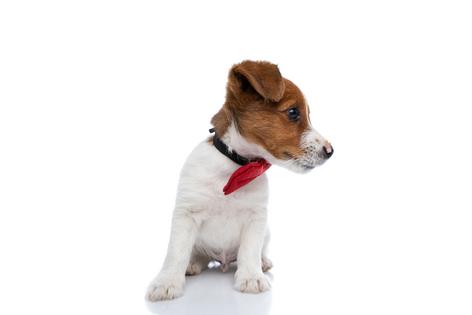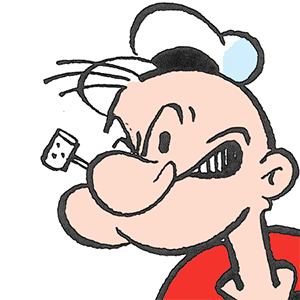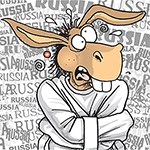My Pet World: Training a dog to ignore distractions and focus on you
Dear Cathy,
My trainer has always taught positive reinforcement rather than negative consequences, as you recommend. However, I need help understanding what to do when my dog won't listen or obey in cases where it is important.
For example, I have trained my two-year-old Havanese to come when I call, "leave it," "wait," etc., but when we are outside off leash with other distractions, he will do whatever she wants and ignore me totally. This includes eating dead animals or poop, going swimming, running away toward a parking lot, etc.
When I do stop her, or she finally gives up the behavior and comes to me, giving her positive reinforcement/praise doesn't seem right. But I don't know what to do, and my trainer has been no help. Can you explain how I should respond?
– Deb, Manchester, Connecticut
Dear Deb,
It's great to hear you're committed to positive reinforcement training with your Havanese. The challenges you face with off-leash behavior are common and can be frustrating.
To improve your dog's responsiveness, start by practicing recall commands in a distraction-free environment like indoors or in a fenced yard, using high-value treats or toys as rewards. Gradually increase distractions during your training sessions, starting with mild distractions and slowly progressing to more challenging ones. When training outdoors, use a long training line (30 to 50 feet) to maintain control while allowing your dog some freedom, which helps you reinforce commands without the risk of your dog running off.
It's crucial to reward your dog's compliance promptly. If your dog responds correctly, immediately provide a high-value reward, as timing is essential. If your dog ignores the command and you eventually stop them, don't reward the delayed response. Instead, restart the training exercise to reinforce the desired behavior. Make yourself more interesting than the distractions around you by using an excited tone, clapping your hands, or running in the opposite direction to make coming to you more appealing.
Additionally, work on impulse control exercises such as "wait" or "leave it" in various settings to strengthen your dog's ability to resist distractions.
Consistency is key, so regularly practice these exercises to reinforce your dog's training and build reliable behavior. If you're still facing difficulties, it might be helpful to consult a different trainer who specializes in off-leash training and recall. Every dog is different, and sometimes, a fresh perspective can make a big difference.
Dear Cathy,
I read your column where Jim from Schererville, Indiana, questions having his Havanese dog's teeth cleaned. I would like to add my experience.
My late Maltese had to have her teeth cleaned rather often, and it was stressful as she needed to be sedated each time, which is probably why the cost was so high. Years later, when I got my Pom Mix puppy, I immediately started using a dental additive in her water to help keep her teeth clean. My vet checks her teeth each time we go for a visit and, at eight years old, she has never needed a dental cleaning. It certainly has done wonders for her.
— Lois, Bethpage, New York
Dear Lois,
Maintaining good dental hygiene in pets is crucial for their overall health, and starting these practices early on can prevent the need for frequent and costly teeth cleanings. Your use of a water additive solution is an excellent example of how proactive care can make a significant difference. As you mentioned, water additives can be added to your pet's drinking water to help control plaque buildup.
Incorporating the following practices into your pet's routine can significantly improve their dental health and prevent more serious issues down the line.
Regular brushing with a toothbrush and toothpaste specifically designed for pets, daily or a few times a week, is highly beneficial. If you are not a fan of brushing, they make dental wipes and sprays to help reduce plaque and freshen a dog's breath. Providing dental chews and treats designed to reduce plaque and tartar buildup, particularly those approved by the Veterinary Oral Health Council (VOHC), can also make a significant impact. Dental toys also aid in cleaning teeth and massaging gums as pets chew on them.
Even if you do everything right, a dog or cat may need professional teeth cleaning. Some pets are more prone to dental issues due to their genetic makeup, while others may develop problems based on their diet. Some pet foods are now formulated to promote dental health by reducing plaque and tartar, which is easy to address. Scheduling regular dental check-ups with a veterinarian is essential for maintaining dental health and addressing any issues before they arise.
_____
_____
========
(Cathy M. Rosenthal is a longtime animal advocate, author, columnist and pet expert who has more than 25 years in the animal welfare field. Send your pet questions, stories and tips to cathy@petpundit.com. Please include your name, city, and state. You can follow her @cathymrosenthal.)
©2024 Tribune Content Agency, LLC.
(c) 2024 DISTRIBUTED BY TRIBUNE MEDIA SERVICES, INC.












Comments